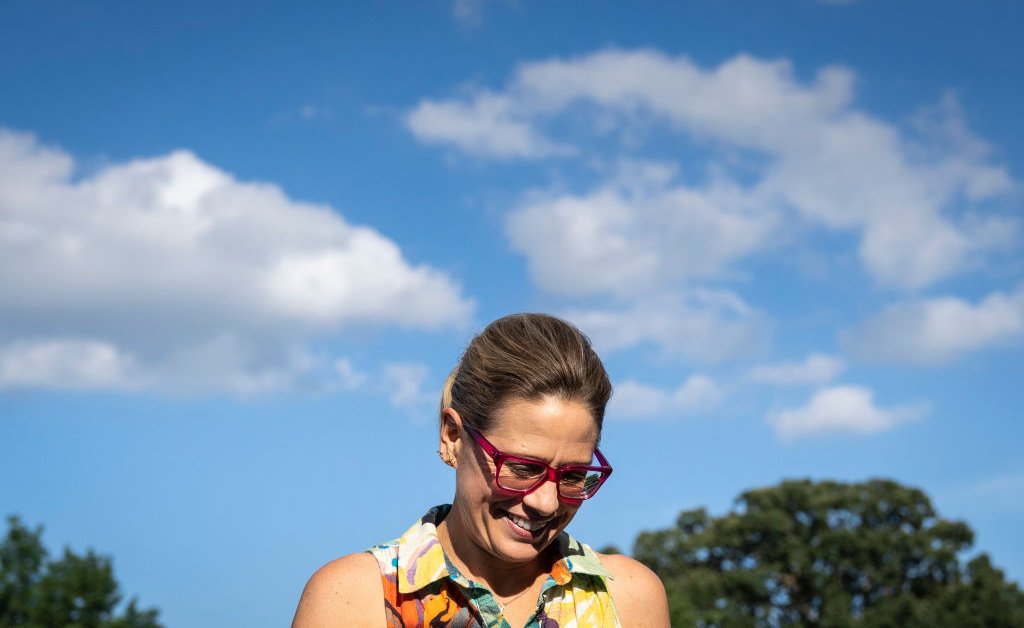Kyrsten Sinema on Friday made official what many frustrated members of her party have long suspected: she’s not really a Democrat. The Arizona Senator who has been a thorn in President Joe Biden’s side for the last two years announced that she was switching her party affiliation to independent.
“Becoming an independent won’t change my work in the Senate,” she wrote in an op-ed in the Arizona Republic. “My service to Arizona remains the same.”
Insiders in Washington and Arizona suspect the move will be far less consequential in the halls of Congress than in her upcoming 2024 campaign for reelection. She has already said she doesn’t plan to caucus with Republicans, so it’s likely that Democrats will functionally be able to govern with a 51-seat majority. But for Sinema, the politics back home are more complicated. Arizona is a battleground purple state with a unique partisan makeup: it’s 35% Republican, 34% independent, and 31% Democrat. Simply put, for any Democrat to win statewide there, they can’t rely solely on their own voters.
And while Sinema has exasperated liberals by opposing Biden’s Build Back Better legislation and refusing to change the Senate’s filibuster rules to pass sweeping voting-rights reforms, she’s had higher approval ratings among Arizona’s Republicans and independents than she has with its Democrats. Her becoming an independent, Arizona sources say, will force some of her potential Democratic challengers from the left to recalibrate their calculus.
“Clearly, it’s in her political best interest to do this,” says Chuck Coughlin, the CEO and founder of the Phoenix-based consultancy HighGround. “The worst place to deploy her asset is in a Democratic primary. It’s the worst ground to fight on because you’re secluding yourself to the most partisan Democrats. So you avoid that by running as an independent. And both of those winners of the primary have to know that they’re ended up having to deal with you. So you’re dictating the course of the campaign.”
Rep. Ruben Gallego, who represents parts of Phoenix, was expected to run against Sinema in the Democratic primary for the Senate seat. But Sinema running as an independent could complicate Gallego’s path forward, as any Democratic challenger will have to reckon with the possibility that their campaign will provide an opening for a Republican to flip the seat. A team of Gallego’s consultants organized a call Friday morning to powwow over Sinema’s party switch, according to sources familiar with the discussion.
On the Republican side, outgoing Gov. Doug Ducey and Pinal County Sheriff Mark Lamb are reportedly weighing bids.
Sinema’s habit of defying the Democratic Party leadership notwithstanding, she has still voted with Biden 93% of the time, according to FiveThirtyEight’s tracker. Yet Sinema has assiduously distanced herself from Democrats in her home state.
In the 2022 campaign, for instance, she rarely appeared on the trail for Sen. Mark Kelly, who was facing reelection, or Katie Hobbs, who would go on to win the governor’s race over former TV news anchor Kari Lake by roughly 17,000 votes. Sinema was conspicuously absent when former President Barack Obama came to rally for the Arizona Democrats in the final weeks of the campaign. (While Sinema spoke publicly of supporting Kelly and contributed $10,000 to his campaign through her leadership PAC, she never joined Hobbs on the stump, nor did she donate to her campaign.)
Sinema has also made other overtures across the political aisle, including by offering a forceful defense of bipartisanship last fall at a University of Louisville center named for Republican Senate Minority Leader Mitch McConnell. “She’s been cozying up to Republicans much more than her own party,” says Barrett Marson, a longtime Republican Arizona strategist.
While Sinema’s break from the Democratic Party will shake up the dynamics of her re-election fight, veterans of Capitol Hill don’t expect it to have that much of a structural impact in Washington. If anything, she will still be as hard of a vote to chase down for Senate Majority Leader Chuck Schumer as she’s always been. “If I take her at her word, and I guess I do, then I don’t expect her to change her votes necessarily,” says Jim Manley, a former senior aide to Senate Majority Leader Harry Reid. “But I do expect her to continue to demand changes to bills before she votes for anything. Which of course she has been doing for the last two years. It remains to be seen how much she is prepared to gum up the works next year.”
That may be grating to Democrats, but some in Arizona see it as a shrewd strategy to win in a state that has long prized mavericks, such as the late Republican Sen. John McCain. Arizona is also a conservative-leaning state that has rejected Trump and MAGA candidates in the last two election cycles, with one of the most increasingly diverse electorates in the nation.
According to Coughlin’s early estimation, a winning coalition for Sinema could entail winning 60-70% of independents in the next cycle, with 35% of both Democrats and Republicans. That’s no easy feat. But Sinema appears to be betting that it will be easier to pull off without either party label.
“It creates a whole kaleidoscope of possibilities that I think, quite frankly, are most to her advantage,” Coughlin says. “But it’s not easy. It’s going to be super hard.”
More Must-Reads From TIME



